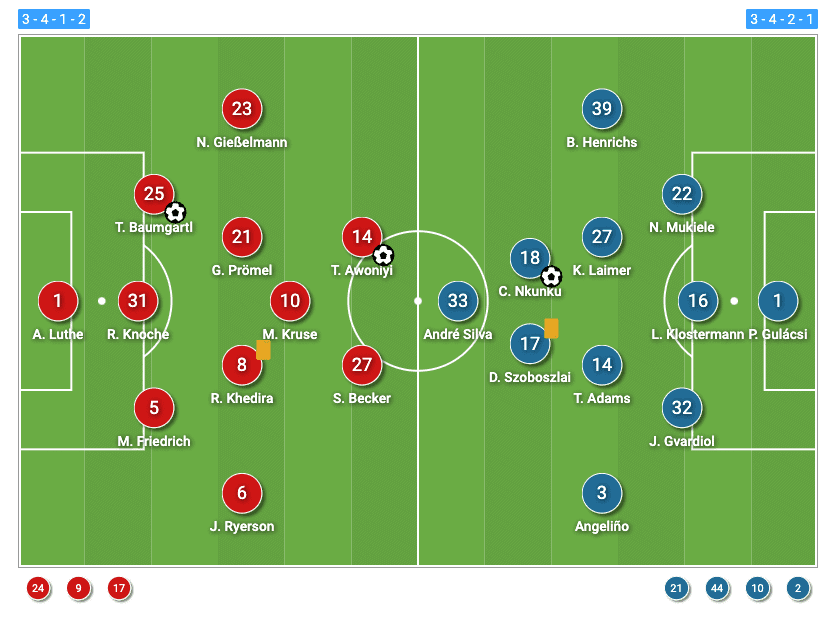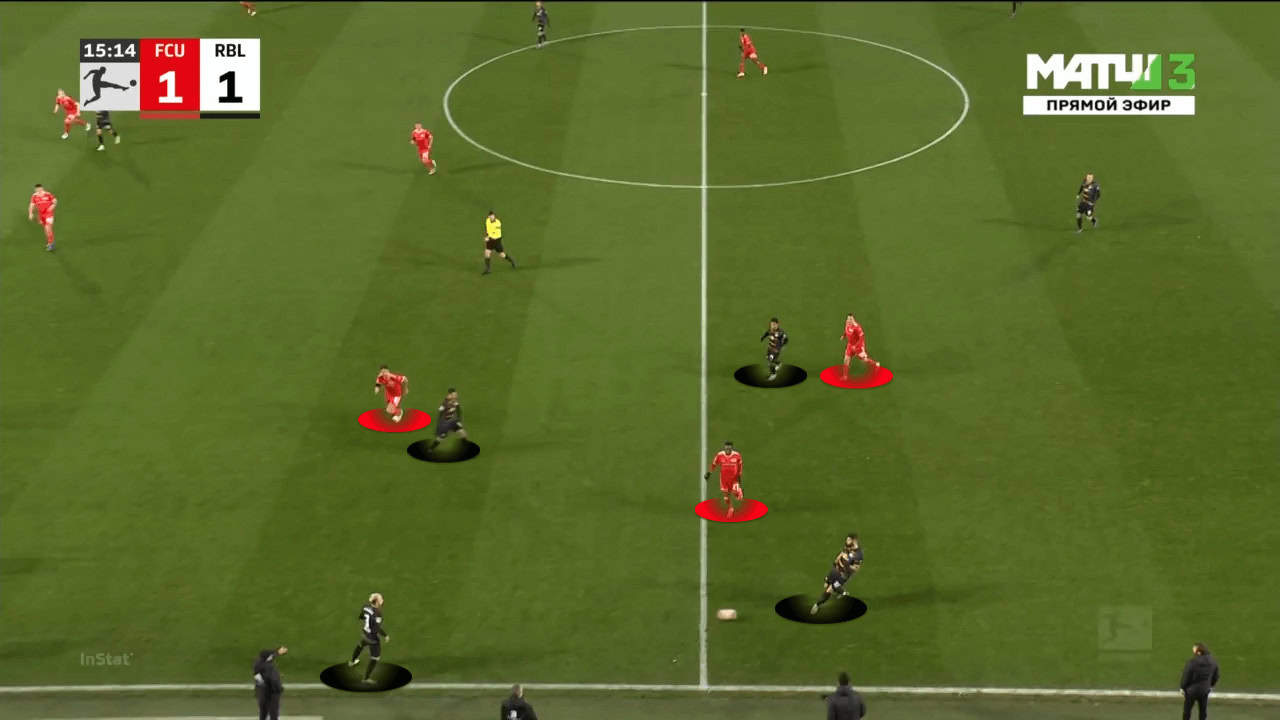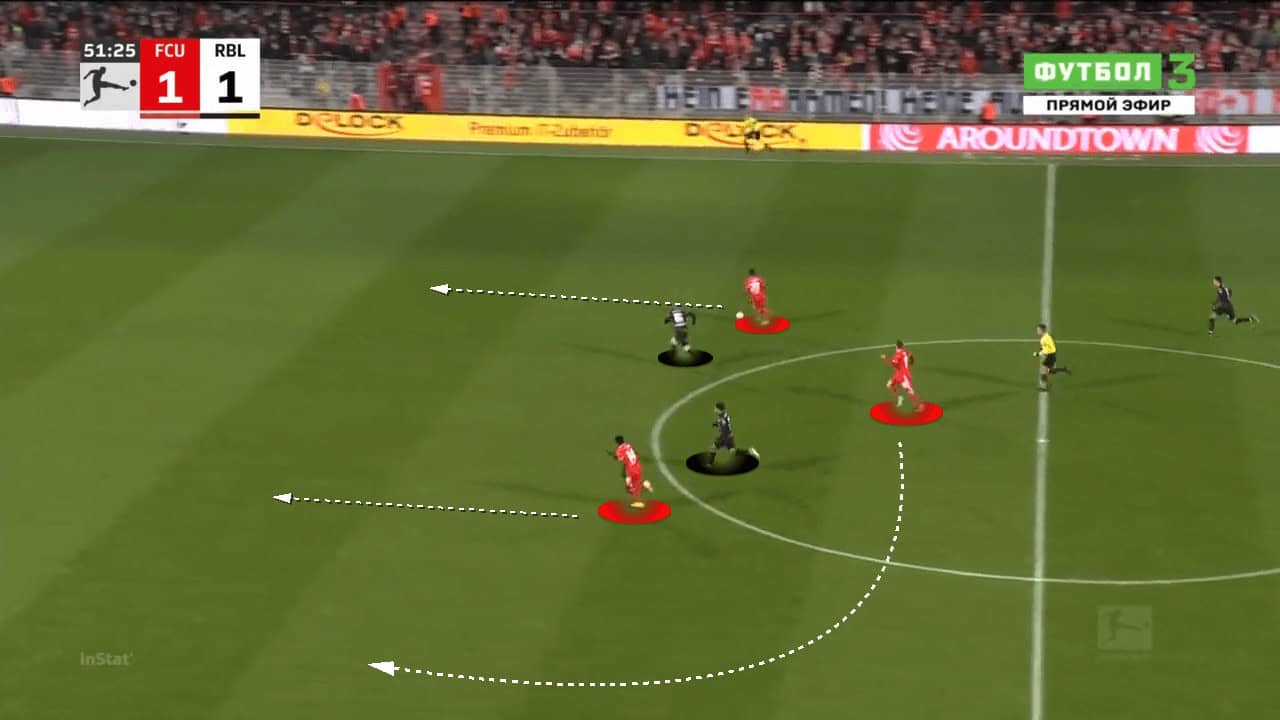The Red Bull football factory has been a revolutionary operation, that has changed the game with training methods and recruitment policies. Ralf Rangnick, now interim manager at Manchester Utd, is the man responsible for the Red Bull rise within countries such as Austria with Salzburg and in Germany with Bundesliga clubs such as Hoffenheim and RB Leipzig with gegenpressing. RB Leipzig has quickly climbed the footballing ladder since they were established in 2009, with them finishing second with Ralph Hasenhüttl, now managing in the Premier League. In addition to their second-place finish within their first season in the German top flight, in 2019, the newly formed club got as far as the semi-final in the UEFA Champions League.
The term ‘Red Bull factory’ is not a form of marketing or fancy wordplay; this term regarding Red Bull should be taken quite literally as many players have followed a very similar pathway to success. A player such as Tyler Adams, Amadou Haidara, Dayot Upamecano, now at Bayern Munich and Konrad Laimer. All players mentioned have played for New York Red Bulls or Red Bull Salzburg before making the switch to the big leagues of football. This transition from club to club is not solely exclusive to players only as now managers are moving up the rank, non-other than, Jesse Marsch who brought success to his previous teams.
Excitement grew as the American manager was set as RB Leipzig head coach, but Marsch has not met the expectations that were set from the outside world. Entering their game against Union Berlin, RB Leipzig placed ninth in the Bundesliga, with their chances of progressing in the Champions leagues already over before the last game of the group. To make matters worse, Jesse Marsch and his coaching staff came down with a case of covid 19 and could not attend their Friday night match-up. As Leipzig struggles continue, Union Berlin has never been better, with manager Urs Fischer at the helm.
This tactical analysis with cover Union Berlin’s crazy first 20 minutes, while also going over Leipzig’s possession pros and cons. Lastly, will be discussing Berlin’s effective counterattacking.
Line-up
Union Berlin made use of a 3-4-1-2 with Andreas Luthe in goal. In defence, Julian Ryerson and Niko Gießelmann as wingbacks, with, Marvin Friedrich, Robin Knoche and Timo Baumgartl at centre-back. Union’s midfield two consisted of, Rani Khedira and Grischa Prömel. Up-front, Max Kruse, Sheraldo Becker and Taiwo Awoniyi
For this game, RB Leipzig tactical switch from their previous outing, as they lined up using a 3-4-3. In goal, Péter Gulácsi. A back three made up of Joško Gvardiol, Lukas Klostermann and Nordi Mukiele, with Benjamin Henrichs and Angeliño as wingbacks. In midfield, Konrad Laimer and Tyler Adams, in addition to Dominik Szoboszlai, Christopher Nkunku and André Silva, formed the attacking trident.

Union’s First 20 Minutes.
The opening passages of this game were quite hectic, to say the least, as Union managed to score the opening goal of the game with a well-worked set-piece in the fifth minute. Union initiated this corner by Sheraldo Becker playing the ball short to Max Kruse who was nearby as a support option.
As Max Kruse picks up the ball for the short corner, Julian Ryerson is within proximity, and with him close by, Union now has created a 3v2 Leipzig’s Angeliño and Dominik Szoboszlai as they tried to press and create pressure.

As the ball is whipped in from the right-hand side, Union has four players located at the back-post with Taiwo Awoniyi stationed at the front-post with opposition defenders around him. , Julian Ryerson targets the back-post and as the ball is travelling, Leipzig defenders at the front-post end-up watching play instead of being proactive. Timo Baumgartl wins the aerial battle at the far post, and Taiwo Awoniyi is the first to react to the ball across goal and manages to tap the ball into the back of the net.

So, Union went up 1-0 within the first 10 minutes which would be incredible to start against Leipzig, regardless of their form. This being said, when in-possession during the build-up phase, Union struggled.
Union’s build-up patterns were quite interesting upon observation but did not have the effect they were hoping for. At goal-kicks, Union’s outside centre-backs would split and position themselves in-between the goalkeeper, creating a makeshift three with central centre-back, Robin Knoche just in front. Union would soon shift back to their original shape as they looked to progress the ball, and at this point, problems began. Leipzig utilised a 3-4-3 medium-block out of possession, with their goal, to deny passes centrally and force Union to play wide. Another advantage of Leipzig’s shape was their pressing front three. Leipzig was able to match Union’s back three. When the ball went eventually wide, Union has simultaneously smothered Leipzig, as both Angeliño and Benjamin Henrichs was positioned so high up the pitch.
The Good & Bad RB Leipzig
With the quality imbalance so clear to see when comparing both sides, most would have picked for Leipzig to come out as obvious winners, but football is not as simple as that. Leipzig demonstrated some good passages of play as they combined neat and quick interchanges, with dynamic movements which created space for Leipzig to make the most of.
Despite the use of a double pivot, Leipzig made use of a 3+1 system with Konrad Laimer positioned higher up the field, while Tyler Adams was dropping slightly deeper and operating as a number six. An interesting portion of Leipzig’s play was the positioning of Dominik Szoboszlai and Christopher Nkunku. According to the teamsheet, both attackers occupied the half-spaces and wide areas, and this did occur. At the same time, there was any occasion when the two playmakers were operating on the same side, in addition, both players at any given time will drop deeper within the half-space and create a 4v3 overload. This overload was effective based on the numerical advantage it caused as well as the two players combining so well with quick exchanges which aided ball progression.

With this being said, for their tidy possession during the first half, the creation of quality and meaningful shots was the issue. Leipzig amassed an xG of 0.82 at half-time, which is a poor showing compared to Union Berlin who amassed 1.84. Later on, during the second half, and to remedy this, Leipzig substituted wingback Benjamin Henrichs for Emil Forsberg, which facilitated changes regarding tactics. Leipzig switched from a 3-4-3 to a 4-2-3-1 with Forsberg positioned wide left, with Dominik Szoboszla wide right and Christopher Nkunku in the centre. This tactical change did not have its desired effect as Leipzig’s xG flight lined from this point forward.
RB Leipzig’s main issue was the chance of creating variations, or lack of. Throughout, Leipzig created no shots within zone 14, along with no central penetration and passing in-front and around Union’s low block.
Union Berlin’s Attacking Transition
Union Berlin did not control this game concerning possession nor did they enter the match attempting. Nevertheless, as mentioned prior, Union was still able to produce quality opportunities, some coming from set-pieces but others coming from their threatening counterattacking. During the opening passages of this game, Sheraldo Becker played as an outside eight in a midfield three out of possession but transitioned in a right-winger and created a front three with fellow attackers, Max Kruse and Taiwo Awoniyi. As Leipzig was chasing the game, the centre-backs pushed higher into Union’s half to create pressure, and Union was able to capitalise.
Here, Joško Gvardiol is carrying the ball within Union’s half, with no real passing option in front of him. As he moves with the ball, Max Kruse presses him.

Joško Gvardio losses possession and Grischa Prömel picks up the loose ball and plays it forward, with an advantageous 3v2 counterattack.

Conclusion
RB Leipzig has gone through a meteoric rise through German football in a short space of time. They were able to do so through astute transfer strategy mixed in with football people making footballing decisions, a concept which is not as common as some may believe. On decision that has so far looked to be a blunder on Red Bull’s part is the hiring of Jesse Marsch. So far, his Leipzig team have not been firing this season, which is a stark contrasted compared to Union Berlin, which made this matchup rather interesting. Leipzig showcased pretty patterns at times but Union’s quick, slick set-piece routines and counter attackers were effective and made them worthy of all three points on Friday night.
Note: After writing this analysis, Leipzig fired Jesse Marsch.






Comments